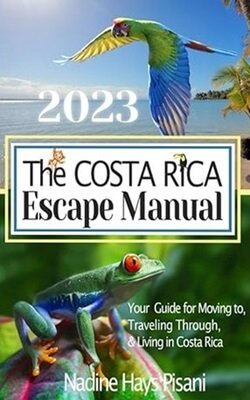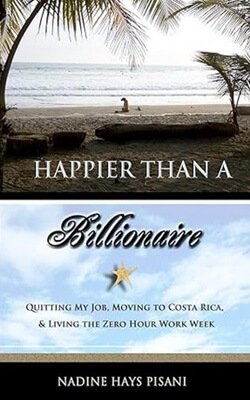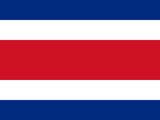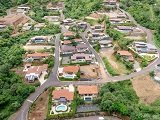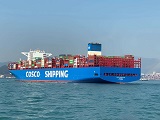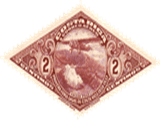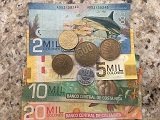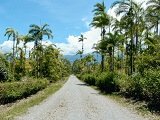- Home
- Moving Guide
- Cost of Living
Search this site
Costa Rica Cost of Living
Residency Cost of Living Healthcare Real Estate Bringing Pets Shipping Mail Money Cars Drivers License Moving Resources
Ask anybody who has not lived in Costa Rica, and most likely their impression will be that this country is very inexpensive to live in. It surprises many but Costa Rica prices for those that live here may actually be more expensive than where you are moving from. This is why you need to research all of the items below carefully before going any further.
Healthcare
There are three choices in Costa Rica for healthcare, 1) pay 100% out of pocket to a private medical facility, pay nothing by using the national healthcare system La Caja, however you must be a temporary or permanent resident, 3) obtain an insurance policy and use a private medical facility.
- Paying out of pocket in Costa Rica is much less expensive than the United States. Some examples of this are as follows: 1) standard office visits at a private hospital are usually in the $30-$90 USD range. However, you will meet directly with the doctor and don't be surprised if your consultation last an hour or more. 2) A full body bone density scan for my wife was $87 and she walked out with an amazing 20 page color report with graphs, pictures, analysis and recommendations. 3) A full blood panel workup was $150. The report was emailed and available to us in about 3 hours. 4) a two hour visit and full electro-cardiogram was $150. Again we walked out with a full, multi-page color report and analysis. 5) A colonoscopy was $283 including anesthesia. Yes, you read that correct, less than $300 where in the United States it is $4-5,000 USD without insurance. All state of the art equipment. 6) A blood test for cholesterol was $18 USD and I had the results emailed to me within a few hours.
- With me being in my 60s, the health care insurance cost for a $10,000 deductible, catastrophic, worldwide coverage Blue Cross Blue Shield policy is $2500 for an entire year. The exact same policy was quoted at $3000 per month from a broker in the United States. Who is making the money ?
- Once you become a temporary resident, you are automatically enrolled in the La Caja, the national healthcare system and have the option of using it. The costs for La Caja will vary depending on income and expenses but generally will run the average family of two between $50 and $100 per month.
- Prescription medicine from private medical facilities is much more expensive in Costa Rica than in the United States and are sold by the pill. For example, a 30 day supply of Lipitor is $80 USD. Once you are enrolled in La Caja, all medicine is free.
- In summary, most people that move down here use a combination of paying out of pocket for minor things, using La Caja for free medication (if you are eligible), use Medicare (if you are over 65) when returning to the United States to visit family and then plus it up with a catastrophic policy to cover major events. Also, since many doctors work for both La Caja and private hospitals, some people will pay out of pocket for evaluations and then use the same doctor under La Caja to have surgeries at no additional cost.
Visit our Costa Rica Healthcare page for more information about how the system works and what your options are.
Dental
Here is our experience paying out of pocket without using insurance. Prices will vary with different dentist, but in general, these are the costs that I have seen.
- An office visit is about $25 USD
- Cleaning $60
- Full panoramic x-ray $34
- 3D x-ray $30
- Crown $400 (includes office visit, x-rays, etc)
Sales Tax
- There is a Value Added Tax (VAT) of 13% on nearly everything purchased and for services rendered. This includes food, vehicles, dining out, labor, etc. Until July 2019, this tax was only on goods purchased but was recently expanded to include labor such as attorney fees, car repair, home maintenance, cable TV, water, electricity, etc. Some food items that are considered a necessity, or are produced in Costa Rica, are exempt from the 13% tax. Examples of these are rice, beans, papayas, pineapple, coffee and local beer.
Fuel
- Gas is roughly $6 USD ( and diesel about $5 per gallon) and is sold by the liter. Prices have been driven up by the war in Ukraine. Below is a great link to get current gas and diesel prices. Use the pull down menus to select currency and liters versus gallons. Keep in mind that there are 3.785 liters per gallon.
- There is no such thing as underground, piped natural gas in Costa Rica. People that have gas appliances such as a stove or outdoor grill use propane. Is is widely available and costs about $15 USD to refill a five gallon container and $70 USD to fill a 4 foot tall cylinder for your stove. The gas for our stove lasted over two years before having to be refilled.
Costa Rica Prices - Cars
- Owning a car is expensive. There is a yearly registration fee called Marchamo, and it must be paid between November 15 and December 31. It is based on the value of the vehicle, and with car values being very high in Costa Rica, even used cars will have an expensive Marchamo. Our 2014 Toyota RAV4 AWD is valued at about $16,000 USD and our fee was $587 in 2020 and $453 in 2021.
- Maintenance can be much more expensive and will vary on the road conditions that you drive on. If you live at the end of a potholed 20 mile dirt road, your maintenance will be far greater because you will be replacing tires and suspension related parts often. Parts are more expensive because they have to be imported but the labor to install is much less. The overall cost to repair something may end up being less, but the frequency will be more often if you drive dirt roads.
- There are also vehicle inspections called Riteve. For cars less than 5 years old, you must have the inspection every 2 years. For vehicles over 5 years, the inspection is every year. The inspection includes all lights, including license plate and backup lights, suspension, brakes (front, rear and parking), odometer, wipers, vehicle fluids including wiper water reservoir, air conditioning, emissions, tire tread and wear, seat belts and general integrity of the body and chassis. The cost for a standard passenger vehicle is about $27. The inspection takes about 30 minutes.
- Tires are surprisingly inexpensive as compared to the US. We paid $400 for four high quality Bridgestone tires. This included balancing, installation and a warranty. We purchased them at Pricesmart (similar to Costco).
Property and Income Taxes
- If you own land or a home in Costa Rica, property taxes are much less as compared to San Diego. In California, it is not uncommon to pay between $8,000 to $12,000 a year in property taxes for a mid sized, 2,000-2,400 square foot home. In Costa Rica, the standard base tax rate for homes and properties is 0.25 percent which equates to $250 USD for a $100K house and $1000 USD for a $400K house.
- There is an additional luxury tax on a home's value (excluding land) over 129M Colones (approx $221K USD) that starts at 0.25%. The luxury tax is bracketed so as the value of your home increases, so does the percentage of the tax. This tax gradually goes up to a maximum of 0.55%. A one million dollar home gets taxed at 0.40%. Please remember that this luxury tax is in addition to the standard 0.25% property tax on home and land. Update 2021 - The Costa Rica government has approved an increase in the base bracket of the luxury tax from 0.25% to 0.50%. This tax increase has not been enacted yet as the process is still being updated. Important ! - If the value of your home is over the $221K USD threshold, you must then add in the value of the land and the total tax is computed on the combined value of the land and home.
- If you come here to retire and don't receive any income generated from Costa Rica, you won't have to pay Costa Rican income taxes. An example of this is receiving Social Security.
- Depending on where you are coming from, for us California, you may no longer have to pay state income tax. Every state varies and there are many factors that may result in you continuing to pay state tax such as owning a vacation home or even a timeshare in that state. Consult your attorney to be sure. Even though you move to Costa Rica, you will most likely still have to file your United States Federal income tax.
Insurance
- Homeowners insurance for us is much less than in the California. In Costa Rica, it covers earthquakes, volcanic eruptions, floods, hurricanes, landslides, fire and theft.
- Because earthquake protection is included in the standard Costa Rica policy, and California required a separate policy, our overall cost dropped significantly, going from $1800 per year to about $900.
- A good automobile insurance policy for us (2014 Toyota RAV4) runs about $650 per year. Most policies automatically include roadside assistance. For us, this is half of what it was in California.
- Private Healthcare will run between $1500 and $3000 USD per year but actual costs will depend on the plan selected, deductible, age and pre-existing conditions. Either way, it is a fraction of the cost of what the United States charges.
Electricity
- Electricity is expensive, similar to San Diego. In hot regions such as the beach communities, where air conditioning during dry season is required, it is not unusual is have a bill of $200-300 USD per month. In the Central Valley and surrounding foothills, AC and heating is not needed and monthly electricity costs are very low, probably in the $30-60 range depending on lifestyle.
- Solar is just emerging and not yet widely accepted. Solar is very expensive as compared to the United States because the panels and equipment must be imported. However, the price is recently starting to come down.
- Electricity is about 16 cents per KWh.
Water
- Water is inexpensive and generally plentiful. However, because of the hot and dry climate in the Guanacaste province, it is more expensive there and at times there can be water use restrictions.
- Our water bill for two people, a 12x25 foot pool and water wise landscaping has ranged between $25-$40 per month.
TV and Internet
- Internet is going to vary, both in quality and cost, depending on where you live. The Playa Flamingo and Brasilito regions have fantastic internet, both in terms of speed and reliability. Fiber has just started coming to the area. Our monthly cost for 30 Mb internet with a great TV package, including some US channels, HBO and Cinemax, is about $50 per month. In San Diego, our combined TV and internet cost was $240 per month and did not include HBO and Cinemax.
- A good satellite TV only service, such as Sky TV, is about $50 USD per month.
Phones
- Cell phone plans are incredibly inexpensive with outstanding coverage. Kolbi is perhaps the best provider. My bill in the US was $80 per month. In Costa Rica, using a prepay plan, it has been less than $10 each month. You can save even more if you use WhatsApp to send text and make phone calls back to the US over your WiFi and internet.
Restaurants and Food
- For eating out at a restaurant, the VAT of 13% is applied to the entire bill, In addition, there is also an automatic 10% tip (propina) added to eat-in restaurant bills. This is mandatory, even if the service and food are horrible. So right off the bat there is 23% automatically added in. If the experience was a good one, many people plus up with another 5-10% cash.
- Chicken, fish, eggs, rice, beans, potatoes and locally grown fruits and vegetables are inexpensive. Beef and pork are more expensive but there are some fantastic meat markets that offer much better pricing than local supermarkets. Anything imported from the United States that has a popular brand name is expensive. Examples of these item are Jiffy Peanut Butter and Kellogg's Raisin Bran.
- Fish is bountiful, inexpensive as compared to the US and Canada, and really fresh. The tuna, mahi-mahi, wahoo and snapper are some of the best in the world. On average fresh fish, caught that day, is between $5 and $8 USD per pound.
- Alcohol is expensive, primarily because the majority of it is imported. Locally produced beer is around $10 USD per six pack, although deals can commonly be found. Guaro is probably the most popular locally produced liquor and is made from sugar cane juices that are readily available from the region.
